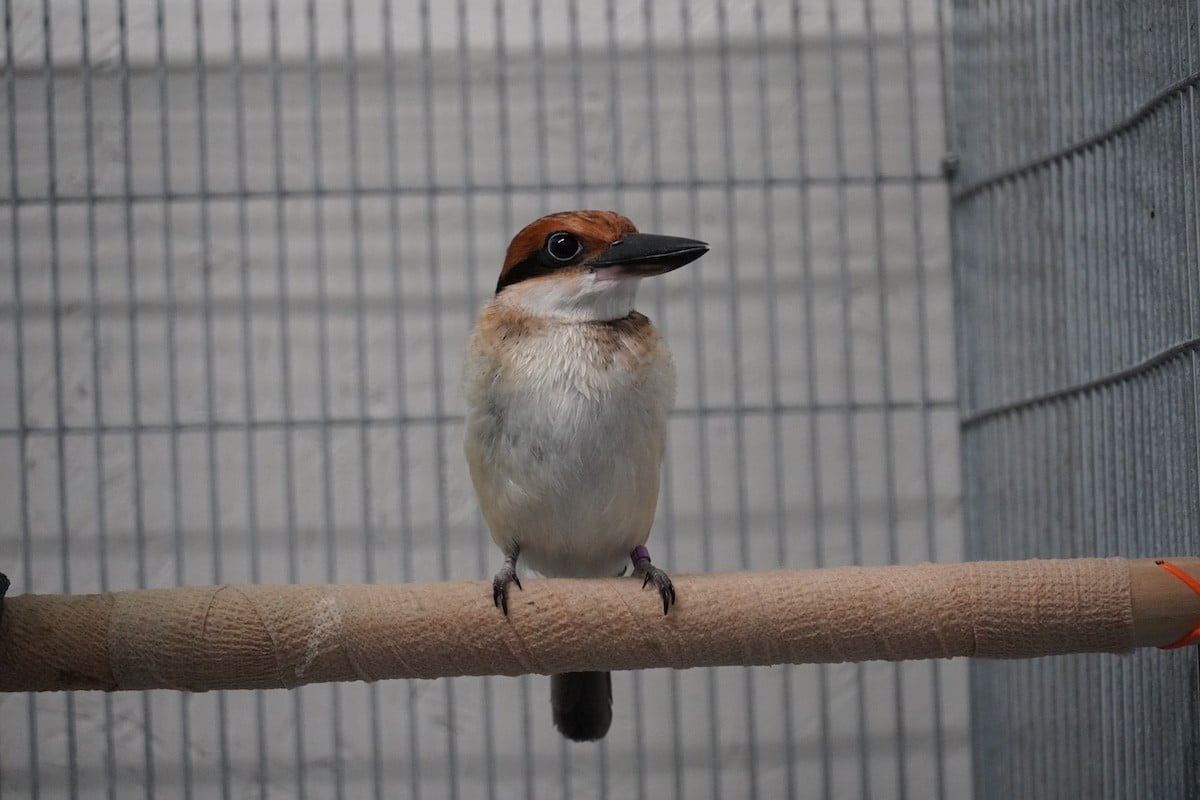The Cincinnati Zoo & Botanical Garden is helping save the world, one animal at a time. The zoo recently played a major role in a program that would help re-establish a bird species that’s been extinct in the wild since the ‘80s.
In a press release, the zoo says nine sihek, or Guam kingfisher, chicks arrived at their new home in the Pacific Ocean on Aug. 28. Three of those chicks — all females, named Tutuhon, Sindålu and Fuetsa — were bred at the Cincinnati Zoo as part of the Sihek Recovery Program.
The chicks spent time in quarantine in Wichita, Kansas, before making a 4,600-mile journey to The Nature Conservancy’s Palmyra Atoll preserve and research station. They’ll spend a few weeks getting acclimated to their new home before becoming the first sihek to be released in the wild in nearly 40 years.
The sihek flourished on the North Pacific Island of Guam until the ‘40s when the invasive brown tree snake was accidentally introduced and decimated wild bird populations. In the ‘80s, the Association of Zoos and Aquariums (AZA) and the Guam Department of Agriculture coordinated emergency rescue efforts and saved 28 sihek from the wild.
The Sihek Recovery Program, which is made up of world-leading conservation experts from around the world, has been working for years to re-establish the species in the wild, and 2024 is the first year that facilities housing the rare birds have produced enough healthy chicks to be released. The Cincinnati Zoo received its first sihek adult in 1982 and has since produced more than 30 chicks. Because of this success, it was invited to be a part of the historical translocation effort that started last year.
The sihek chicks were all raised in a purpose-built biosecurity facility at Sedgwick County Zoo in Wichita, where they received care from specialist bird keepers from seven participating AZA zoos, including Cincinnati. Senior aviculture keeper Aimee Owen was one of the bird team members who cared for the sihek as eggs in Cincinnati.
“This project has been so impactful to our department. It was a real team effort, internally and with participating organizations, and we’re just so proud to have been a part of it,” Owen said in the press release. “The Cincinnati Zoo has been participating in efforts to ensure the survival of this iconic kingfisher species longer than I’ve been alive, and we’re beyond thrilled to be on the cusp of making conservation history.”
The Palmyra Atoll was chosen as the chicks’ release location because it’s free of predators and fully protected. The chicks, four females and five males, will be monitored and cared for in The Nature Conservancy’s aviaries until they’re ready to be released.
You can stay updated on the chicks’ progress on the Sihek Recovery Project’s Instagram.








